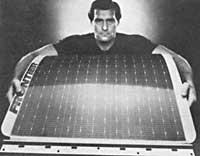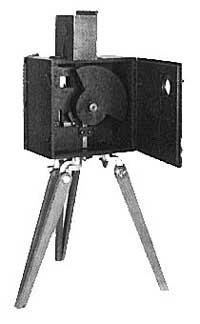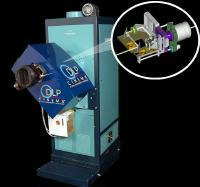Optical sound, voice cinema
2004/03/01 Lexartza Artza, Irantzu - Elhuyar Zientziaren Komunikazioa Iturria: Elhuyar aldizkaria
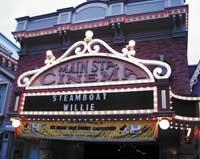
The phonograph and gramophone sound reproducers appeared before the cinema. It was not uncommon, therefore, that, nothing more to publish the first films, inventors began to think about sound cinema.
While some inventors tried to achieve synchronization between discs and projectors, others tried to record sound in the film with photographic techniques. The Frenchman Lauste got it in 1910, but did not have amplification systems and had to use headphones. Shortly afterwards, electrical amplification was achieved thanks to the triode lamp made by the American De Forest.
The life of the inventor De Forest was prosperous. In addition to working a lot, he had problems with several patentals and was sued several times. Some of his companies failed, the partners misled him on several occasions and once accused him of having committed fraud, although they finally considered him innocent.
However, some works gave him fame and his optical sound technique was fundamental in the development of sound cinema. The soundtrack was located in a dark spot next to the image. A narrow ray of light sent by the triode lamp reached a solar cell through the soundtrack. When the film was moving, the solar cell altered the signal due to the variation of the luminous intensity. The signal was subsequently amplified and sent to the speakers.
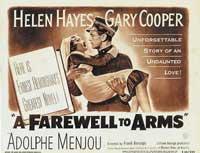
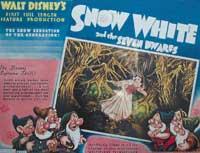

Phonofilm, founded by De Forest in collaboration with millionaire Case, is the first show in a New York cinema in 1923. That day the vaudeville were shown working on short films. Among them, among others, Conchita Piquer appeared. This performance was the starting point of sound cinema and his work in this field earned him the Oscar of Honor to De Forest in 1959.
Sound diffusion sound sound diffusion
At first, however, studies did not know the impact of this innovation on the film industry. The Warner brothers took their first steps in the dissemination of sound cinema and in 1926 they presented the feature film Don Juan. However, it only had musical effects and sounds. The first feature film of interviews, The Jazz Singer, was made in 1927. For this purpose, the Warner studios did not use optical sound, but the Vitaphone system that synchronized with the screen the recordings made on the disc.
On the other hand, based on De Forest and Casen Phonofilm, the Fox study developed the Movietone system, which was the most used by other studies. Movietone was known for the news that was initially offered in the films. In 1927 a film with recorded music on the side track (Seventh Heaven) and an informative was screened for the first time.
The sound films were very successful and soon reached Europe. In Germany a system compatible with Movietone was created in 1929 and patent competition was created to achieve the European market. The first sound films were held in Germany and the United Kingdom in 1930 in France, Italy, the Soviet Union and Spain, and in 1931 in Japan and India.
From 1930, the optical sound was definitively imposed on the disc system, seeing better results. Currently, optical sound is still used to record the sound of the distribution copies. The compatibility of this system is, to a large extent, the cause of the success of optical sound. In fact, a copy of 1927 with this system can be seen and heard on any optical projector, whether ancient or modern.
The sound of the films has improved notably, especially in microphones, optical track technology, sound mixtures, etc. The new systems have managed to reduce stereo, background noise and improve the transmission band, and today digital sound has reached the world of films.
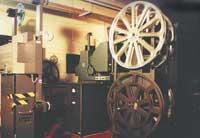
The use of the most modern systems has spread widely, although still many films are recorded with conventional monophonic sound, which greatly reduces costs. In addition, some cinemas only have traditional equipment. From Phonofilm to Dolby Digital things have changed a lot, but we can say that the objectives of the initial inventors have been met, since after eight decades the sound is one of the basic components of the films.

Gai honi buruzko eduki gehiago
Elhuyarrek garatutako teknologia



